Flat feet, or PES Planus, affects the way the feet and ankles work, causing them to flatten out when standing. This condition can cause pain in the lower legs and feet and other symptoms such as difficulty balancing or walking.
It is important to be aware of any changes in your foot shape that could indicate flat feet. Causes can vary from genetics to medical conditions like obesity or diabetes.
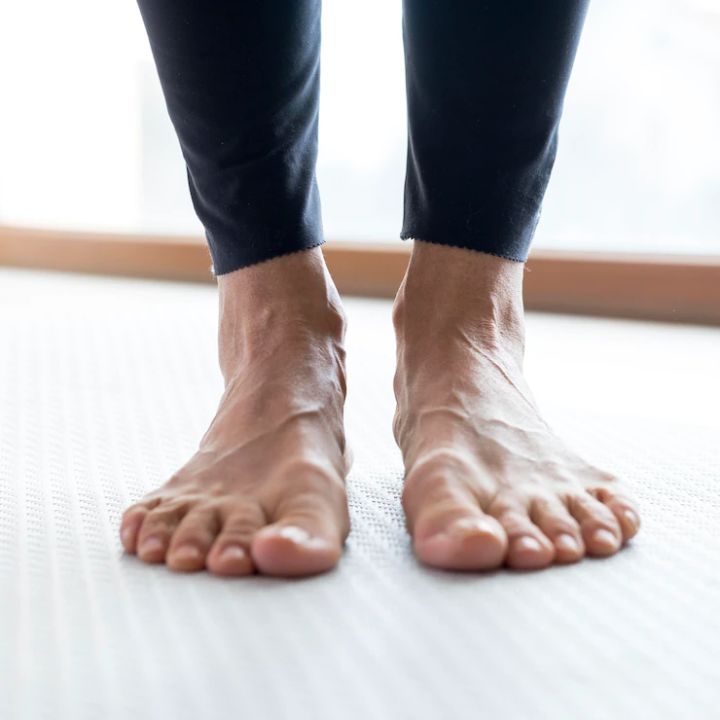
Photo Credit: Freepik
Treatments for this condition include physical therapy, orthotics, and surgery. Early diagnosis can help with successful treatment plans that relieve discomfort and improve function of the affected area.
If you suffer from flat feet (Pes Planus), you may experience pain in your feet, a visible foot deformity, and arch collapse.
Pain in the feet can range from a mild ache to severe discomfort, and the type of pain will depend on the severity of the condition.
The deformity associated with flat feet can be seen by an outward turning of the ankle joint as well as a flattening of the arch on the bottom of your foot.
In some cases, this can lead to arch collapse which causes more stress on other parts of your foot.
Having flat feet can cause painful feet. People with this condition often experience discomfort in the arch and heel area, making it difficult to walk or stand for an extended period of time. Pain can also occur when standing up after sitting down for long periods of time. Additional symptoms may include swelling, redness, and a burning sensation around the arch area of the foot.
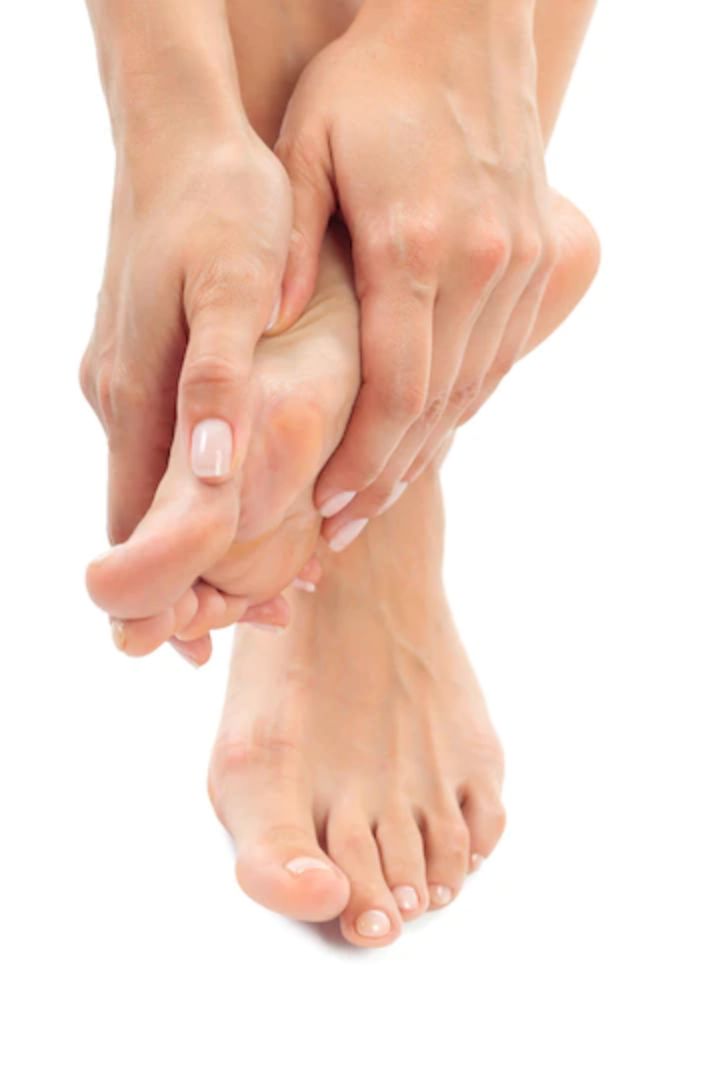
Photo Credit: fabrikasimf
The most common cause is an inherited structural abnormality that affects the shape of your foot’s arch, but other causes such as age-related degeneration and arthritis are possible.
Treatment for painful flat feet usually involves exercises designed to strengthen the muscles in your foot and ankle, along with wearing supportive shoes with inserts or orthotics that provide cushioning and shock absorption. Other treatments may include physical therapy, taping techniques, bracing devices, steroid injections to reduce inflammation, or even surgery if needed.
It’s important to consult with a doctor to determine what type of treatment is best for you based on your individual needs.
You may experience a deformity in your foot, which can cause pain and discomfort. The most common form of this is pes planus, also known as flat feet. This condition occurs when the arch on the bottom of your foot collapses, resulting in an abnormally flattened sole.
Symptoms of pes planus include pain in the heel, arch, or ankle, swelling around the affected area, difficulty standing on tiptoes or walking long distances, and an inward rolling of the ankles.
Causes of flat feet include having a family history of the disorder, injuries to ligaments or tendons in the foot, certain medical conditions such as obesity and diabetes, and age-related changes to collagen fibres in ligaments and tendons that support your feet’s structure.
Treatment options for flat feet vary depending on severity. They include wearing supportive shoes with arch supports or orthotics (shoe inserts), physical therapy exercises to strengthen supporting muscles and tendons in your feet and ankles, anti-inflammatory medications to reduce swelling, and pain relief ointments/creams. Surgery may be recommended if other treatments are ineffective at relieving symptoms.
Arch collapse can lead to the flattening of the sole, resulting in pain and discomfort. This common foot deformity known as pes planus or flat feet affects both adults and children. It occurs when the arch of one or both feet collapses due to weakened muscles, ligaments, or tendons that support it.
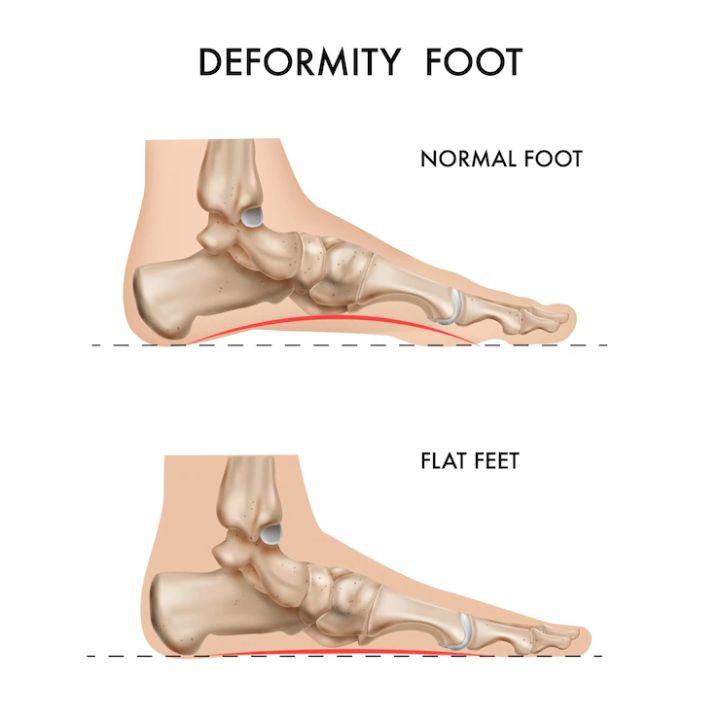
Photo Credit: macrovector
Symptoms include foot pain, swelling in the ankles and lower legs, difficulty standing on tiptoes, and outward rolling of the ankles when walking. Causes range from trauma to obesity or genetics.
Treatments vary depending on severity but may include physical therapy exercises to strengthen weakened muscles and improve flexibility; orthotics to provide arch support; activity modification; anti-inflammatory medications; changes in shoes; bracing or casting for severe cases; and surgery for more advanced cases.
Various factors, including genetics, injury to the foot or ankle, and overuse, can cause flat feet. It is also possible for flat feet to develop after a period of prolonged standing due to muscle fatigue or weakened muscles in the arch of the foot. Other potential causes include obesity, leg or foot nerve damage, and aging-related ligaments and tendon changes.
Here are some key causes of flat feet:
If you’re concerned about flat feet, your doctor can diagnose the condition by examining your feet and asking questions about your medical history. During the physical exam, they’ll check for signs of flat feet such as an arch that’s lower than normal or no arch at all. Your doctor may also ask how much pain or discomfort you experience while walking or standing. They may also ask if you have any other symptoms like swelling or redness in your foot.
Imaging tests like X-rays may be used to better view the bones in your feet and ankles. This will help them determine the cause of flat feet and rule out other conditions.
Treatment options will differ depending on the underlying cause, so getting a proper diagnosis from your doctor before attempting any form of treatment is important.
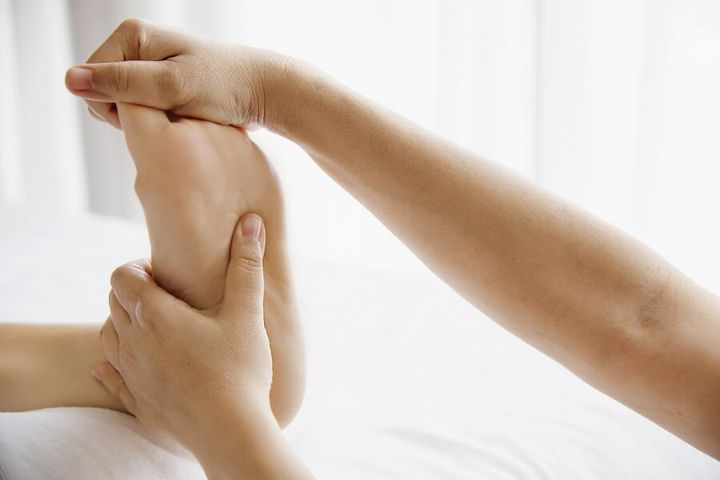
Photo Credit: jcomp
Treatment for flat feet typically depends on the underlying cause. It may include stretching exercises to strengthen the muscles and tendons in your feet, orthotic devices like shoe inserts or braces to help support your arches, or physical therapy. Possible treatment options for flat feet include:
Flat feet can be prevented by wearing the correct shoes and limiting walking. Wearing supportive shoes with adequate arch support helps to prevent flat feet from developing further. Additionally, limit the amount of walking or running you do to help prevent further damage to your feet.
Incorporate regular stretching exercises into your daily routine to strengthen the muscles in your lower legs that support your arches.
Wearing the proper shoes for your foot type can help reduce the symptoms of flat feet. Shoes should be chosen based on arch height, flexibility, cushioning, shock absorption, and stability. Here are some key points to remember when choosing shoes to prevent or reduce symptoms of flat feet:
Limiting your walking can help ease the discomfort associated with PES. If you have flat feet, it’s important to reduce the amount of stress on your feet each day.
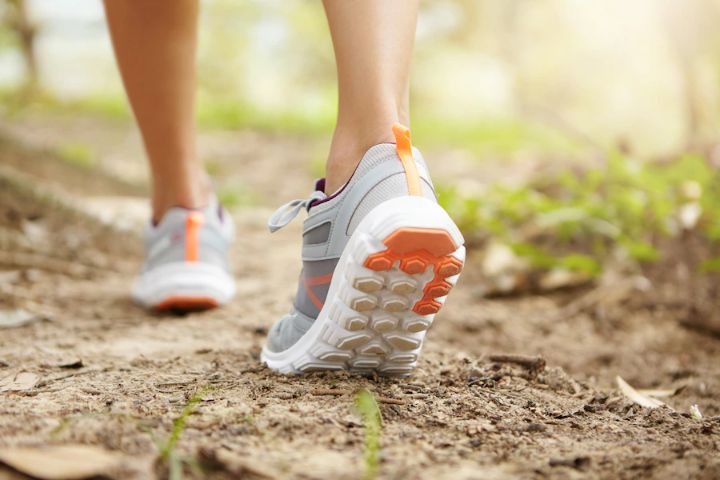
Photo Credit: wayhomestudio
This includes limiting the number of activities that require a lot of standing or walking. Try to avoid sports and other high-impact activities that cause pain in your feet. Instead, focus on low-impact exercises like swimming or biking for exercise and physical activity.
If you must walk for long distances, wear supportive shoes with arch support and cushioning to keep pressure off your feet. Elevating your feet while resting can also decrease the strain placed on them throughout the day.
Now onto the second line of defense for dealing with flat feet: stretching exercises. Stretching out your feet and legs can relieve some of the symptoms of flat feet.
To get started, you’ll want to focus on four key areas: calf muscles, Achilles tendon, plantar fascia, and toe flexors. Here are five stretches that will help target each area:
You’ll need to take extra care of your feet if you have flat feet. This includes wearing supportive shoes, using orthotic inserts, and avoiding activities that put a lot of strain on the feet. Wear arch support in your shoes and select footwear with a wide-toe box for optimal comfort. Be sure to rotate different shoes so the same pair isn’t worn daily. Invest in custom-made orthotics that fit the shape of your foot perfectly.

Photo Credit: serhil_bobyk
When it comes to physical activity, look for low-impact exercises such as swimming or yoga that won’t place too much strain on your feet. Also, stretch before and after any workout routine; this will help maintain flexibility in the muscles and tendons around the feet.
Lastly, pay attention to how your body feels during activities; if you feel pain or discomfort at any point, stop immediately and rest your feet until they feel better again.
Flat feet can cause pain in your feet, ankles, and legs. Pain may range from mild to severe, depending on the severity of your condition. Common symptoms include arch pain, ankle instability, and tiredness after standing or walking. See your doctor if you experience persistent discomfort.
Yes! Some exercises can help with flat feet. Strengthening and stretching the muscles of the feet and ankles can improve balance, posture, and foot mechanics. Try calf raises toe curls, and ankle circles for a start.
Flat feet can affect your posture and balance, leading to foot, ankle, or knee pain. Long-term effects include increased risk for arthritis and joint inflammation. Regular exercise and supportive shoes can help reduce these risks.
If you have flat feet, making some lifestyle changes is important. Consider wearing supportive shoes, avoiding high-impact activities and stretching regularly to reduce pain and discomfort.
Yes, there are medical devices available to help with flat feet. Orthotics can be worn in shoes or inserted into them to provide arch support and relieve pain and discomfort.